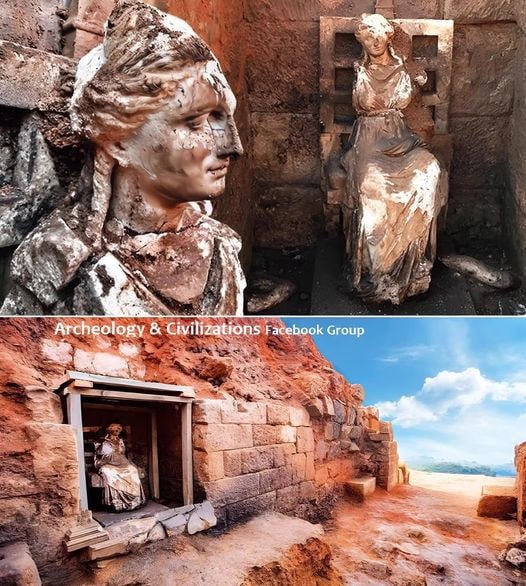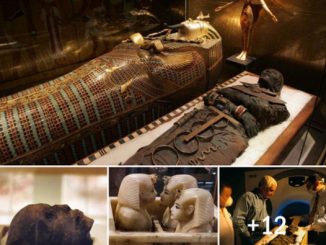In the heart of Turkey’s Black Sea province of Ordu, nestled amidst the rugged terrain and steeped in the echoes of antiquity, lies Kurul Castle—a site of both historical significance and archaeological wonder. Recently, amidst excavations in this storied locale, a remarkable discovery emerged from the depths of time: a 100-year-old marble sculpture of the revered Mother Goddess Kybele, seated upon her throne. This magnificent artifact, hailing from the sixth Mithridates period and belonging to the Hellenistic Pontus Kingdom, offers a captivating glimpse into the ancient civilizations that once thrived in Anatolia. Join us as we embark on a journey to unravel the mysteries of Kybele and delve into the rich tapestry of history woven within her stone form.

An Iconic Figure Resurrected: Kybele, also known as Cybele, holds a revered place in the pantheon of Anatolian deities—a symbol of fertility, motherhood, and the nurturing essence of the earth. Depicted in the recently unearthed marble sculpture, she sits majestically upon her throne, her regal presence imbued with a sense of timeless wisdom and maternal grace. Standing at 110 centimeters tall and weighing approximately 200 kilograms, the statue commands attention, its intricately carved features a testament to the skill and artistry of ancient craftsmen. As we behold the image of Kybele, we are transported back through the annals of time, to an era when gods and goddesses walked the earth and mortals sought solace in their divine embrace.
A Glimpse into Hellenistic Pontus: The discovery of the Kybele sculpture offers more than just a glimpse into the mythic realms of ancient Anatolia; it provides a window into the cultural and political landscape of the Hellenistic Pontus Kingdom. Named for Mithridates, the king who reigned over Pontus and Armenia Minor from approximately 120 to 63 B.C., this period marked a convergence of Greek, Persian, and Anatolian influences—a melting pot of civilizations that flourished in the fertile lands of northern Anatolia. Through the lens of this sculpture, we gain insight into the religious practices, artistic traditions, and royal patronage that characterized Hellenistic Pontus, shedding light on a chapter of history often overshadowed by more well-known ancient civilizations.
Resonating Across Millennia: As we marvel at the craftsmanship and significance of the Kybele statue, we are reminded of the enduring power of ancient artifacts to transcend the boundaries of time and space. From the moment of its creation, through centuries of obscurity and rediscovery, to its present-day unveiling, this sculpture has borne witness to the ebb and flow of human history. It serves as a tangible link to our ancestors, a reminder of the civilizations that have come before us and the legacies they have left behind. In beholding Kybele, we are invited to reflect on our own place within the continuum of time, to ponder the mysteries of existence, and to pay homage to the enduring spirit of human creativity and resilience.
Conclusion:
As we bid farewell to the ancient halls of Kurul Castle and the timeless presence of Kybele, we carry with us not just the memory of a sculpture but the echoes of a bygone era. The discovery of this magnificent artifact serves as a poignant reminder of the importance of preserving and cherishing our shared cultural heritage. In celebrating the legacy of Kybele and the civilizations of Hellenistic Pontus, we honor the diversity of human experience and the enduring quest for meaning and connection that unites us across continents and centuries. May the Mother Goddess watch over us as we navigate the currents of history, guiding us with her wisdom and grace.


